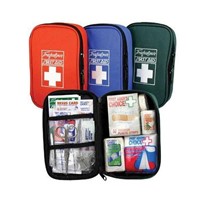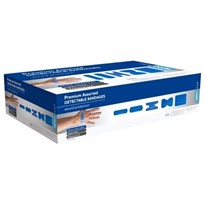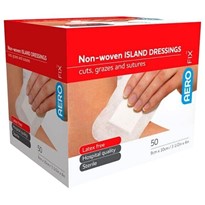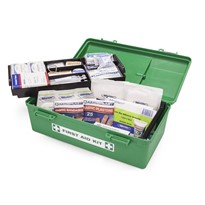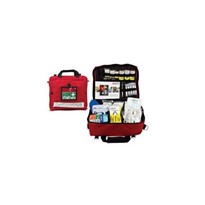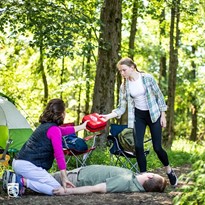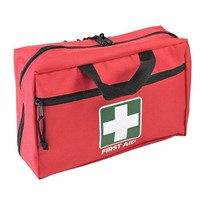Minor injuries like insect bites and sunburn can happen whether you’re camping in a remote bush site or at a caravan park. Being prepared for more serious emergency situations like snake bites and broken bones could improve the situation until medical help is able to arrive. In some cases, it could save a life.
However you plan on exploring the great outdoors, a well stocked first aid kit should be on your packing list. Check out the tips below for what should be in a first aid kit for camping.
What is in a first aid kit for camping?
Basic first aid kits should contain a range of wound dressings, bandages and pain medication. Antihistamines, insect repellent and antibacterial wipes are also a good idea.
When thinking about what to include in your kit, it’s important to anticipate possible risks you might face. Minor injuries can occur any time when you’re in the outdoors.
Ensuring you have the right first aid equipment can improve recovery and comfort and help you avoid complications such as infection.
Here are some common camping injuries and what should be in your first aid kit to deal with them.
Burns
Sunburn is common on camping trips, but burns from campfires and stovetops are also a risk.
To treat a burn, remove the injured person from the heat source and cool the burn. Running the affected site under cool water for 20 minutes is ideal, but if you don’t have access to running water, place a damp cloth over the burn site. Don’t apply ice.
Superficial burns, including sunburn, can be treated with burn gel or Aloe Vera. Deeper burn wounds should be bandaged with clean, non-adhesive gauze.
Essential First Aid Items for Burns:
- Burn gel
- Burn dressings
- Conforming bandages
- Nitrile gloves
Grazes and Cuts
Superficial grazes and minor cuts are common when camping and hiking. Ensure the wound is clean by running it under cool water before applying a dressing.
If the wound doesn’t stop bleeding on its own, apply pressure using clean gauze. Once the bleeding has stopped, apply the appropriate dressing for the size and type of wound.
Items to Include in Your Wound Dressing Kit:
- Gauze
- Wound dressings of various sizes
- Bandages of different sizes
- Nitrile gloves
- Medical tape
- Iodine swabs
- Sodium chloride for irrigation
Insect Bites
Insect bites may cause a range of symptoms such as itchiness, swelling, localised pain and blisters. These symptoms can be treated with calamine lotions, antihistamines or gels and sprays with Aluminium Sulphate.
In some people, particular insect bites may cause a life-threatening allergic reaction. If someone is struggling to breathe, losing consciousness or feeling stomach pain from an insect bite, medical help should be sought immediately. If the person carries an EpiPen, it should be administered.
Essential First Aid Items for Insect Bites:
- Insect bite gels and sprays
- Antihistamines
- Pain relief drugs such as ibuprofen or aspirin
- EpiPen
Dehydration
Long days outdoors can lead to dehydration, headaches and fatigue. Ensure you have plenty of water for everyone, and keep drinking throughout the day. Oral electrolyte solutions can help too. Use pain medication as appropriate, according to the instructions on the package.
First Aid Contents for Dealing with Dehydration:
- Ibuprofen, aspirin or other pain killers
- Electrolyte solution
More Serious Issues to Be Prepared for
Many minor injuries can be self treated, but for more major issues, such as fractures, heavy bleeding and snake bites, professional medical attention is required. If you are camping somewhere remote, make sure you have an emergency plan in place for contacting help if you need to.
First aid for serious injuries can help improve outcomes and may even save someone’s life. Being prepared with the right first aid gear is crucial.
Snake Bites
Snake bites can be venomous or non-venomous. If you or someone you are with gets bitten by a snake, you should always treat it as a venomous bite and call for medical help immediately.
A pressure immobilisation bandage should be applied for snake bites on the arm or leg. Find out more about how to treat a snake bite effectively.
Your Snake Bite Kit Should Contain:
- Snake bite bandage (pressure immobilisation bandage)
- Permanent marker (for recording the time and location of the bite)
- Low adherent dressing
- Conforming heavyweight bandage.
Sprains and Fractures
Sprains and fractures can be very painful. It’s important to reduce movement of the injured area and stop any bleeding. Medical help should be called if there is bleeding, if the bone looks out of place or if the person is unresponsive. A splint can be applied to help immobilise fractures on the arm or leg.
First Aid Supplies for Sprains and Fractures:
- Wound dressings
- Splint
- Pain medication
- Bandages
Deep Wounds
Deep wounds require professional medical attention. If there is heavy bleeding, it’s important to control the bleeding by applying pressure with a sterile dressing or cloth. If blood soaks through, replace the cloth with a clean one.
Use a non-adhesive, gentle dressing to cover the wound and try to elevate it above the level of the heart if possible.
Essential Wound Dressing Kit Items:
- Gauze
- Bandages
- Range of wound dressings
- Pain medication
- Nitrile gloves
Be Prepared this Camping Trip With the Right First Aid Supplies
Understanding what should be in a first aid kit for camping is a great step. Next, make sure your first aid kit is properly stocked before you head off on your trip. Whether you’re going with a school group, work mates or your family, being well prepared will give you peace of mind that you have the right supplies in case something goes wrong.


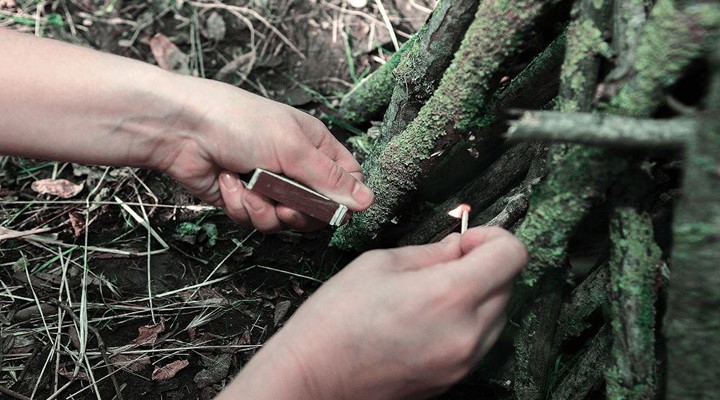
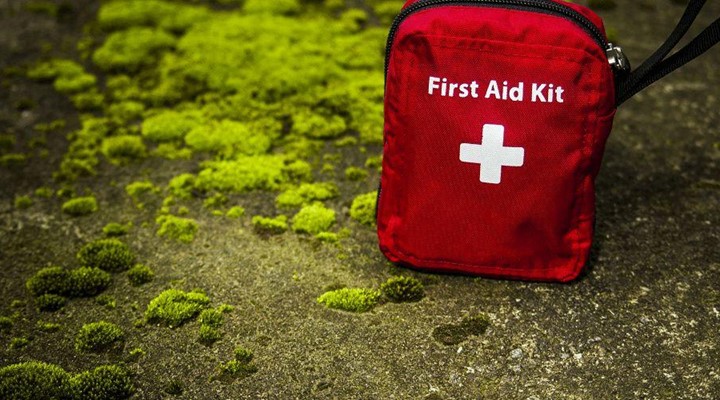

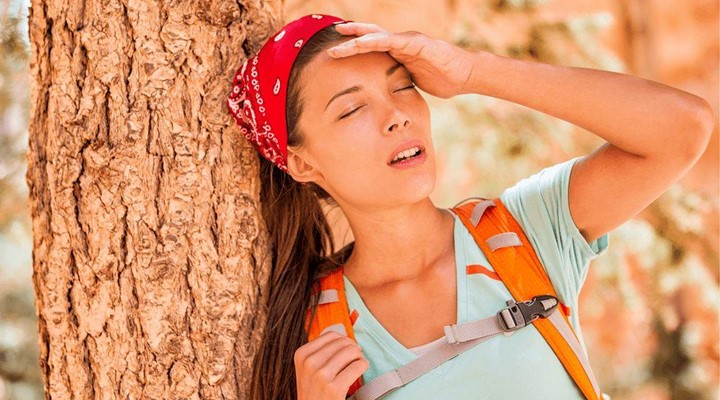
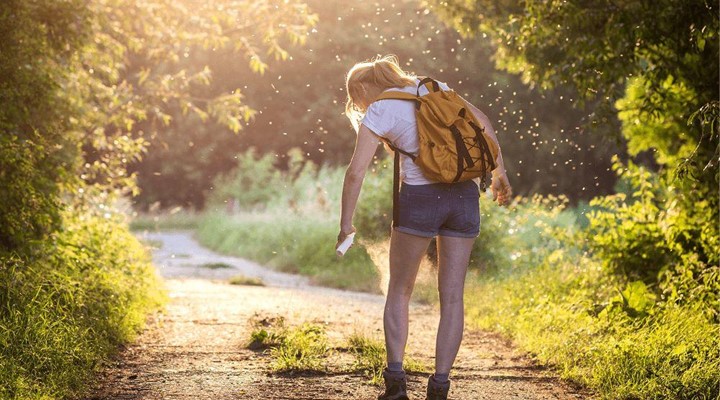
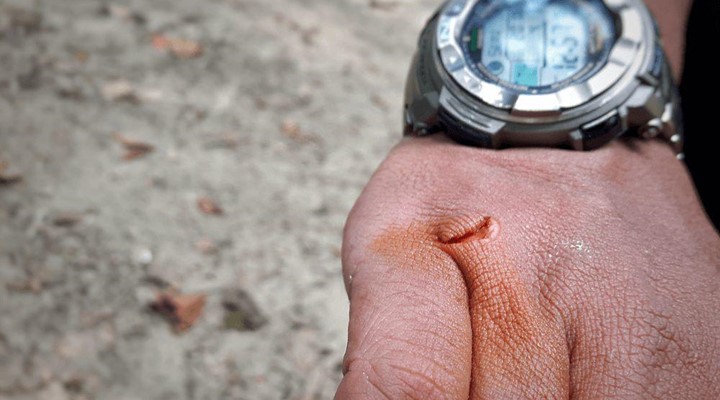
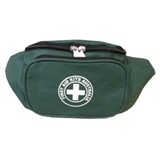
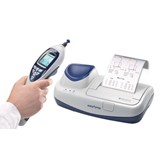
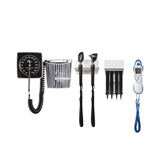
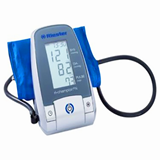



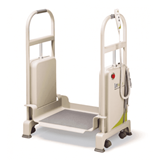
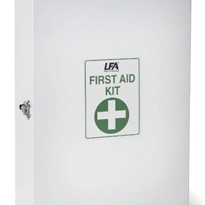
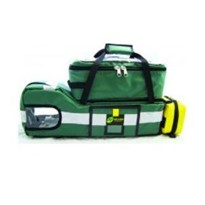

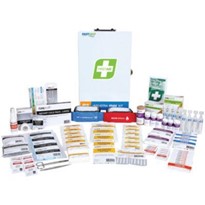
-205x205.jpg)
